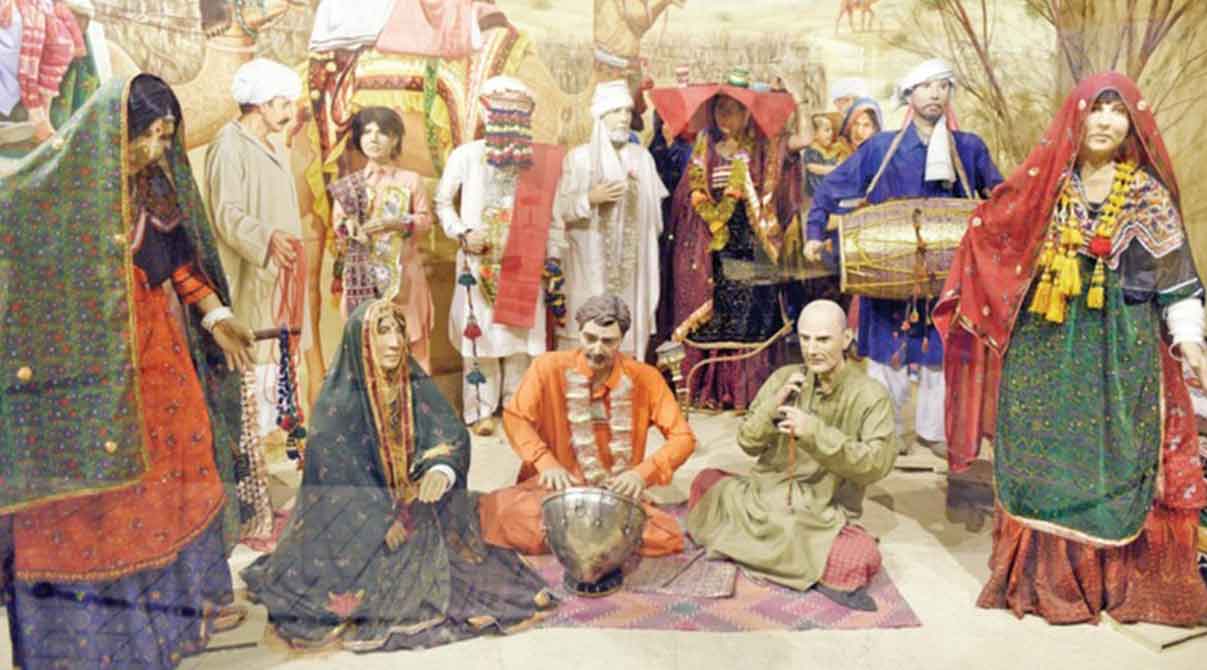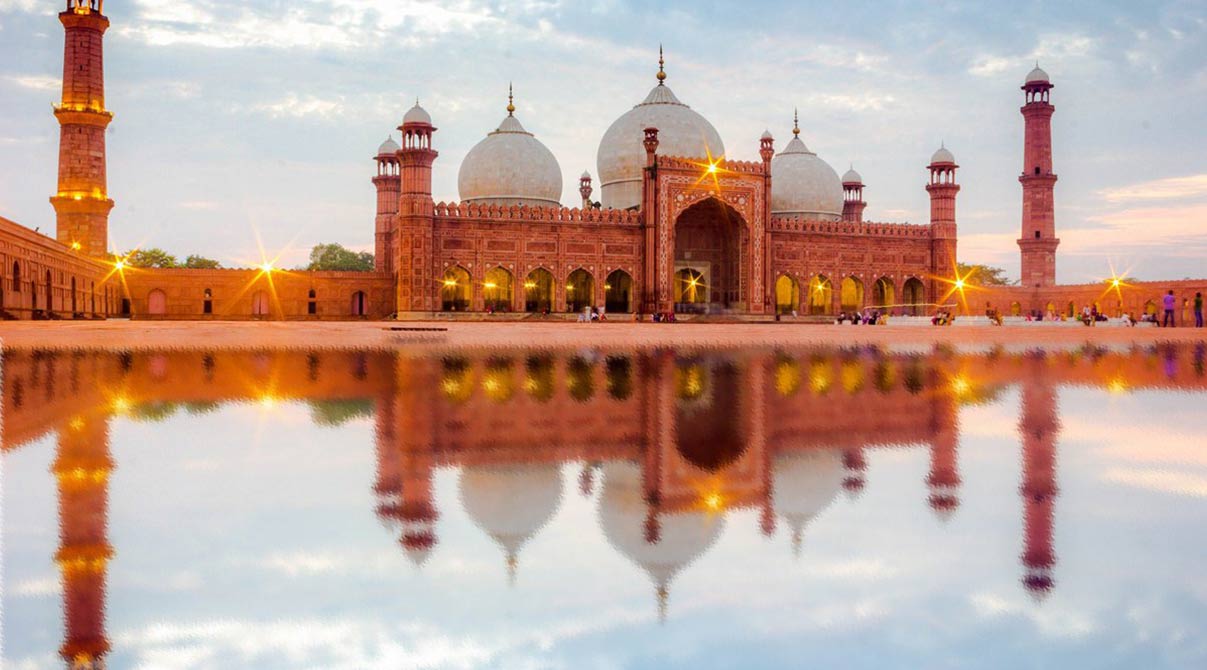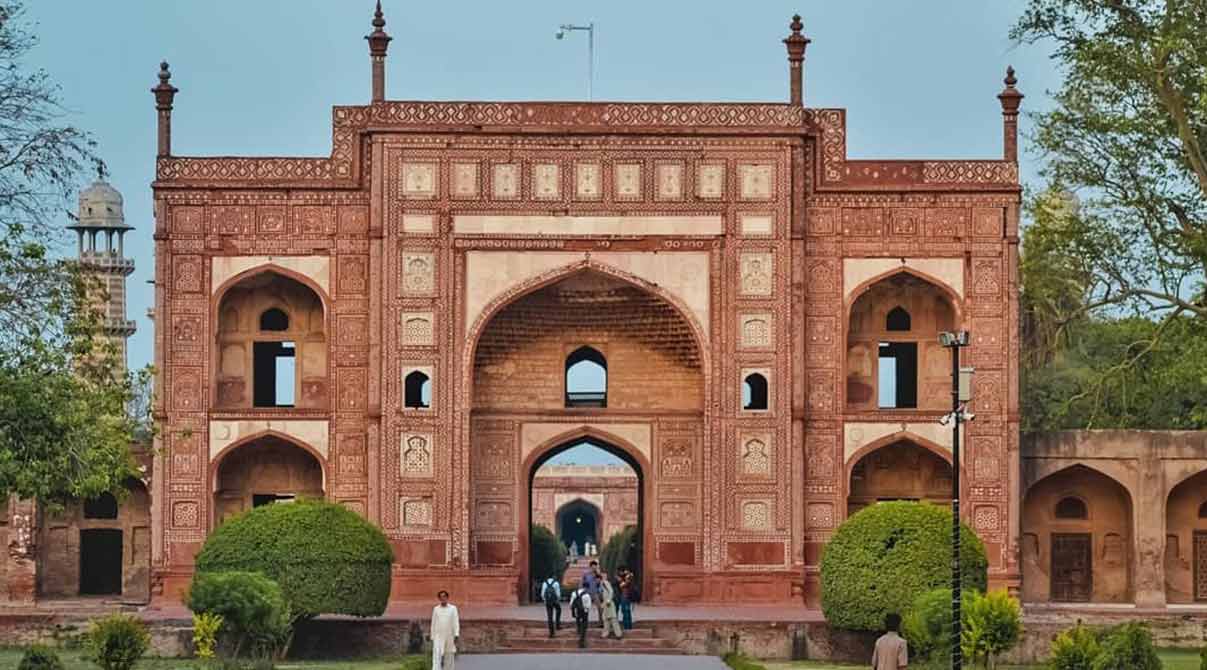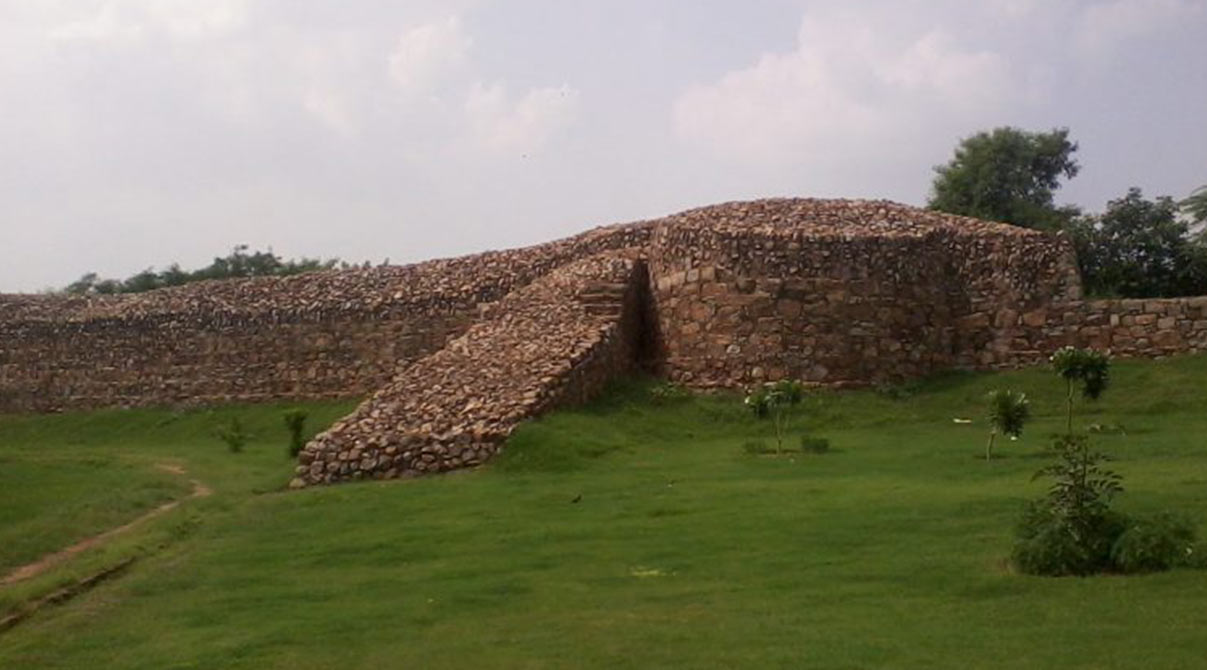Pakistan, officially known as the Islamic Republic of Pakistan, is a country in South Asia on the western shore of the Arabian Sea. It is bordered by India to the east and Iran to the south.
Pakistan has a history going back over 5,000 years. In fact, the Indus River Valley civilization was flourishing between 3000 and 1800 BC. The Harappa and Mohenjodaro civilizations were established around 1700 BC. The Indus Valley civilization had a vast trade network, and the cities of Mohenjodaro and Harappa had elaborate fortifications.
Let’s explore the historical places of Pakistan in this article.
A Dive into the Early History of the Region
The first recorded mention of the area of modern-day Pakistan is found in ancient Sanskrit texts of the 3rd century BC. Around the 2nd century AD, Hindu, Sanskrit and Buddhist pilgrim records mention the Paksitanis, who are identified with the Pashtuns. Paksitanis were part of the Arya races, one of the four groups of Hindu ethnology.
The Pashtuns are thought to have arrived in South Asia during the Mesopotamian period and later in the Bactrian period. The term Pakistan was probably used by Alexander the Great during his conquest of Kush and Gandhara in 326 BC. Pakistan is also mentioned in the Manasollasa of the Mahabharata.
The region of Pashtunistan was part of the Mughal empire between 1526 and 1876, when the British colonized it. During this time, the Pashtuns became subjects of the Mughals, and the Pashtuns were granted privileges by the Mughal government. The Pashtuns developed a Pashtun language, Pashto.
In the 18th century, the Afghan emperor Shah Durrani conquered the Pashtuns. Shah Durrani established Pashtun governments in Khost and Herat. He also established a Pashtun court system in his empire.
The history of the modern state of Pakistan begins with the partition of British India. The main goal of the division was to create separate Muslim states in what was then British India. The British government divided the Indian subcontinent into two independent dominions, with one Muslim majority state created in what would become the Dominion of Pakistan, and one Hindu majority state created in what would become the Dominion of India.
A Piece of History in Every Area
The city of Multan in Punjab Province has the ruins of two of the earliest mosques in the world: the Tilla Jogian and Qasba ul-Jamea mosque. The Buddhist city of Taxila, in Punjab Province, is located near the ancient cities of Mohenjodaro and Harappa, and has more than 1,500 Buddhist caves dating back as far as 200 AD. The beautiful Mughal architecture of the old city of Lahore (in the Punjab Province) reflects the culture of the Mughals.
A visit to the shrine of Sufi saint, Data Ganj Bakhsh, in Peshawar (in the Khyber Pakhtunkhwa Province) is a popular pilgrimage site among Sufis and the public. The shrine attracts people from across the world, who believe that Data Ganj Bakhsh has miraculous powers. In the northern part of the country, the historic site of Karakoram Pass, at 3,826 meters above sea level, is one of the highest passes in the world.
Historical Places in Pakistan That You Must Visit
Following are some of the most important historical places of Pakistan, each with its own unique history.
Indus Valley Civilization
The Indus Valley Civilization existed between 2700 and 1750 BC and is among the oldest continuous human civilizations on Earth. It flourished around the Indus River. Some of its cities, Mohenjo Daro and Harappa, are UNESCO World Heritage Sites.
Badshahi Mosque
The Badshahi Mosque has a special place in the list of the historical places of Pakistan. The Mughal Emperor Shah Jahan built the largest mosque in the world during the 16th century in Lahore, Pakistan. It was built in the Indo-Persian style and still stands today. The mosque is the largest brick building in the world, built using over 100,000 bricks. It is constructed in two parts, the first being the mihrab which faces Mecca. There are 22 arches supporting the dome which are decorated with fine lattice work. The interior is covered in marble. The dome is 72 feet high and rises on a column of 52 square feet. It is the largest and highest mihrab in the world. It is also the largest domed room in the world.
Related: 5 Ancient Historical Sites in Islamabad that You Are Unaware Of
Shahdara Fort
A massive fort built during the 1580s, it is one of the largest forts of the Mughal Empire. Its holds the tomb of the Mughal Emperor Jahangir, Asif Khan and Kamran Mirza’s Baradari. Known through out history as “The Way of Kings”, as it was the gateway into lahore during the 15th century under the Mughals rule. The rivers of Ravi flow under it and has beautiful gardens which hold the tomb of Dohita Un Nissa Begum the Princess of Mughal
Qila Rai Pithora
Built in 1580 by Mughal emperor Akbar, the fort of Pithoragarh is the second largest fort in North India. Also known by locals as the red fort of Delhi and is one of Delhi’s 7 ancient cities. The fort is an extension of Kot Lal and constructed with a series of moats and ramparts. The fort features a statue of Qila Rai Pithora known as the greatest ruler of Chauhan and builder of this historical landmark. This also has another name “Kot Lal”.
Humayun’s Tomb
This tomb was built in 1588, by the 2nd Mughal emperor and son of the first mughal emperor, “Humayun”. It is the largest tomb in the world, with a surface area of more than 200,000 sq meters. Humayuns tomb is a representation of the mughals architectural designs, the tomb measures at a 25 acres, the gardens are divided into large squares each measuring at 4 squares by the means of water channels and causeways. Each square is subdivided into individual 4 squares totaling to 36 smaller squares.
Related: The Admirable Historical Landmark Minar-e-Pakistan
Shalimar Gardens
Another beautiful piece of architecture from the Mughal Era andone of the known historical places of Pakistan that visitors love to see! This garden was built in the 18th century by the Mughal emperor Shah Jahan. It is the largest in South Asia. The garden features 3 terraces where the first one occupies an outer garden which ends in the Diwan-e-Aam this features a throne made of black marble over a waterfall. The second terrace holds an axial canal, and 2 slightly broader and shallower terraces which is only accessible to nobel men and court guests. It also has a stone bases surrounded by fountains, this terrace is called the “Diwan e Khas”. The third terrace hosts the flows of the axial water canal channels which flows near the garden of Zenna, this features chinar trees and two small guard quarters, both made using kashmir inspired stones.
Mughal Gardens – The Royal Tombs of the Mughal Empire
Mughal Gardens are the former royal gardens of the Mughal emperors. It is a garden tourist attraction situated in Lahore. It is an amalgamation of Persian, European, and Indian elements of design. The gardens are a depiction of modern Mughal architecture as they are heavily influenced by Persian Gardens especially the structure of Charbagh, the goal of these gardens was to make a utopia of peace and harmony for humans to co-exist with will great care to not disrupt the natural beauty of nature around it. These gardens include fountains, canals that flow into the garden providing irrigation at every second, and the area is surrounded by a wall to prevent trespassing.
Fatehpur Sikri
This city was built in the 1570s by the Mughal Emperor Akbar. It is the best preserved of all the Mughal cities. It is located about 30 miles north of Agra. 1. Mohenjo Daro: The Indus Valley Civilization. The famous part is that this was the first city that the mughals planned and was marked by to be the magnificent city which was to be comprised of mosques, religious and beautiful buildings as well as administrative buildings. It was also to host the army, kings servants and court officials
Khyber Pass – The Silk Road
The Khyber Pass is another historical place of Pakistan that stands there to remind everyone the history of the region and Pakistan. It was a key trade route through the mountains connecting the East and West of the subcontinent. Located at an elevation of 3,510 feet and located in the mountains of Spin Ghar, creating the route between Pakistan and Afghanistan, the silk road used to be an area ruled by warlords. The thing about this place is that there is no jurisdiction of either the police or pak army. The city of Landi Kotal is located at the top of the pass but is known as the town that smuggles literally every consumer electronics.
Related: Historical Art in Pakistan
The Grand Trunk Road – Oldest National Highway
The Grand Trunk road, also known as the Grand Old road, has a unique significance in the historical places of Pakistan and subcontinent. It is the second oldest national highway in the world. With a length of 1500 miles and existing before 322 BCE, yes its that old since well you know it was still there in the 3rd century BCE. the road used to be known as Uttarapatha, Sarak e Azam, Badshahi Sarak or Kings Road if you will and Sarak e sher shah.
It’s consider one of the longest and oldest roads in pakistan as it connects Central asia to the entire Indian Subcontinent. Also it’s 2500 years old so everyone’s bound to have some history about it, ask your grandpa he might have a long story to tell you. Under the Ashoka improvements were made to allow travelers more ease, the road was realigned by Rohtas and Suri to Sonargaon, finally rebuilt in 1833 and also in 1860 by the British Empire.
Bhakkar – The Battle of Bhakkar
It was the first major victory for Muslim forces in South Asia. The battle occurred in the 7th century. The battle involved the Ghaznavids (a branch of the larger Turkic Khazar empire) led by Muhammad bin Qasim. He defeated the Hindu king Chach, after he had captured Peshawar and settled there, thus starting the Delhi Sultanate.
Wagah Border
Wagah or Wagha as the locals call it is one of the most famous borders of the world. People come to visit this border everyday to experience the historic view of the border. The area is famous for its Flag Lowering ceremony, it also serves as a transit terminal for the Pakistan and India train station. The area covers over 600 meters and lies on the historical GT road built between Lahore and Amritsar. The boarders location is 24km from lahore and, from amritsar its 32km. The village of attari not the video game console, is located 3km and hold the ceremony evert evening.
Some Major Pakistani Cities with Plenty of Historical Sites
Lahore – City of Colleges
It is the capital of Punjab province. It is also the fourth largest city of Pakistan. Lahore is located along the bank of the Ravi River. Brimming with historical places, every inch of the city has a piece of the past embedded into it making it the very heart of the Punjab region of Pakistan. Emerging as the most profitable areas in Pakistan in terms of real estate. The new developments in the city to adapt to the changes in the economy have made it an attraction for investors with both affordability and variety. In fact most of the businesses have opted to relocate to the historic city for this reason.
Muzaffarabad – City of Wooden Carvings
It is the capital of Azad Kashmir and is located along the Indus river. It is a beautiful historical place of Pakistan famous for wooden carvings. The capital of Kashmir and also Pakistan’s 60th Largest city. Not all cities have happy moments but this city has shown both strength and endurance, surviving being the epicenter during the 2005 earthquake which ranged at a magnitude of 7.6 which caused the collapse of more than half of the buildings in the area and has taken the lives of over 80,000 residents and total deaths reached 100,000 on 8th october.
Related: Hussain Agahi Multan: Ancient and Modern State
Peshawar – City of Flowers
Peshawar is located at the entrance of the Khyber pass. The city is known for its gardens and the historic buildings. Also known as Pekhawar by local residents the city is home to many historical landmarks including Kila Bala- Hisar, University of Peshawar, Quaid e Azam Commerce College and is also the Capital of KPK. The city is surrounded by mountain passes linking it to Kohat.
Many people love peshawar for its excellent food and tourist attractions. Although you may see the city may be known as the “City of Flowers”. But it’s also known for its rush filled road that can leave a sane man in a crippled mental state. Peshawar comprises of a Pashtun majority. It is the sixth largest city in Pakistan linked by the border of afghanistan and has existed since 539 BCE.
Karachi – The City of Lights
It is the largest city of the province of Sindh. This historical place of Pakistan is located at the confluence of the rivers of Indus and Jhelum. Also home to the father of our nation Quaid-e-Azam Mohammad Ali Jinnah and his family. The city welcomes locals and foreigners with its top class standard of living with exquisite beaches, gated communities, tourist attractions and landmarks, restaurants with dishes that’ll make you reminisce upon the very thought, educational institutions with high quality studies and experienced teachers to give students the best of the best.
The city is famous for its diverse and delightful fusion of high, middle and low income neighborhoods, so if you’re looking to earn a high sum then below are some places you should look into







